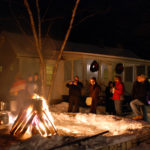Summer Road Trips: Midwestern Wine Trails
The call of the open road is as booming as ever. As far as domestic leisure travel is concerned, more Americans are opting to go by way of the automobile. Whether it’s due to the flexibility of packing heavy and stopping at will along the way or the nostalgia of highway getaways, road trips are back! The Summer Road Trips series offers destinations for the perfect American road trip.
The popularity of artisan beverages has led to an explosion of wineries across the country in recent years. While California is still the king of wine production here in the States, there are plenty of wine trails in the Midwest that can give you the Sonoma experience in the Heartland.
Lake Erie Trail (Ohio)
The moderating lake effect has made the region from Toledo to Buffalo a prime wine-growing spot since the 19th century. Visitors can enjoy a covered bridge driving tour across northern Ohio while stopping in at a variety of wineries, from the giant Debonné Vineyards to the quaint yet acclaimed Markko Vineyard.

Door County Trail (Wisconsin)
In Wisconsin’s Lake Michigan peninsula, eight wineries make up the Door County Wine Trail that takes visitors through the “Cape Cod of the Midwest.” Boasting the same latitudinal planes as the wine regions of Burgundy and Bordeaux, Door County’s established wine scene offers traditional varietals as well as sweet fruit wines to accommodate every palate. Visitors can be sure to stay active and entertained given the peninsula’s reputation for hospitality.
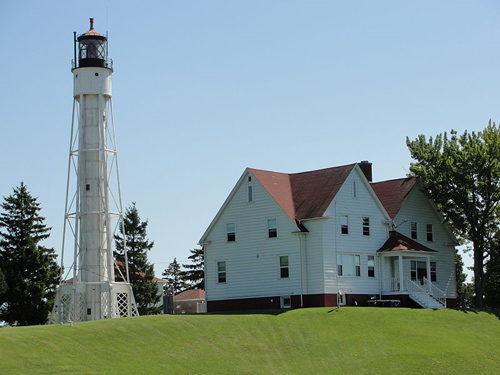
Uplands Trail (Indiana)
Since the 1960s, winemaking on the plateau of south central Indiana has taken off. The Uplands Trail, stretching from Brown County to Bloomington to French Lick, features the nationally ranked Oliver Winery and Vineyards, a destination for fruit wines like Apple Pie, Cherry Cobbler, and Blueberry Moscato. The historic West Baden Springs and the Hoosier National Forest provide sundry excursions for this route.
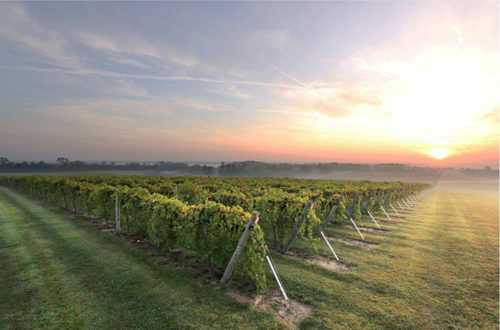
Shawnee Hills Trail (Illinois)
Eleven wineries sit in the Shawnee Hills of southern Illinois, where limestone and sandstone formations tower over the rolling hills of a burgeoning wine industry. In 25 miles, the trail passes through small towns and the Shawnee National Forest, boasting quaint B&Bs, fall color, and — of course — wine. Blue Sky Vineyard offers a Tuscan setting and estate-grown vino, and Von Jakob houses a brewery as well as a winery.

Hermann Trail (Missouri)
Along the Missouri River, six family-owned wineries make up the Hermann Trail near the German town of Hermann. The Adam Puchta Winery bills itself as the oldest continuously-owned family winery in the country; the current owner is a seventh generation winemaker. Two miles north of Hermann is the Katy Trail, the nation’s longest rails-to-trails project at 240 miles.
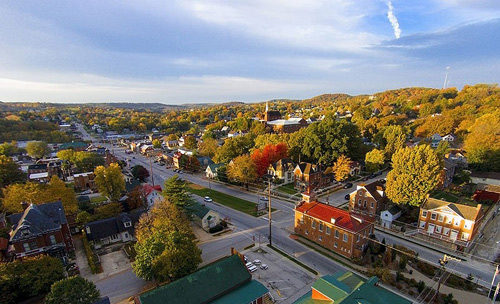
Glacial Hills Trail (Kansas)
Outside of Topeka and Lawrence, four family-owned wineries take advantage of the rich prairie soil created by receding glaciers in the area. A quiet Kansas getaway can include an affordable stay at the Crescent Moon Winery or Jefferson Hill Vineyards, and a day boating or hiking at nearby Perry Lake.

Loess Hills Trail (Iowa)
The silty hills of western Iowa were formed by sand-blown deposits toward the end of the last ice age. While loess soil is common in North America, nowhere is it deeper than in this special grape-growing region. All nine of the trail’s participating wineries commit to sustainable practices for producing wine from the delicate soils of the region. The Loess Hills Scenic Byway twists up through the unique landscape and past the wine destinations.
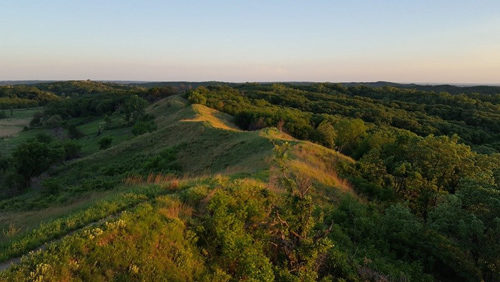
(Minnesota)
Viking lore is at the heart of the Skål Crawl in lake-rich central Minnesota. The short trail includes a winery, a brewery, and a whiskey distillery near historic Alexandria. Small groups can imbibe Minnesotan beverages and visit Big Ole, the tallest Viking statue in North America, and the Runestone Museum, a tribute to the mythological Scandinavian history of Minnesota.

Door County, Wisconsin: The Evolving Door
“We go through a lot of Band-Aids,” jokes Cy Turnbladh, artist, entrepreneur, and owner of Hands On Art Studio in scenic Door County, Wisconsin. For a nominal fee, visitors can spend the day in Turnbladh’s quarry of workshops, dabbling in paint, fusing glass, throwing pots, or building elaborate metal sculptures. “The possibilities are endless,” says Turnbladh, whose staff wanders the 8,000 square feet of gallery space, fetching supplies and offering advice. Since Hands On Art Studio also is home to a growing collection of rescued animals, cats snooze on shelves while larger wildlife—all appropriately named—are relegated to the grounds outside. Among them: Salvador Dali Llama and Vincent Van Goat.
Turnbladh recently winterized his art compound to boost its attraction as a cozy place to spend an autumn or winter afternoon. He describes Door County as a doers’ destination where guests “can experience art, not just buy it.” The peninsula’s evolution from a warm-weather getaway to a year-round playground is gaining momentum. Rather than hunkering down and waiting for the thaw, residents such as Turnbladh are creating new reasons to beckon guests north to “explore the Door,” as their slogan invites. Roughly two-thirds of the region’s tourists still visit between early May and late October, but the shoulder seasons of winter and spring are becoming increasingly popular.
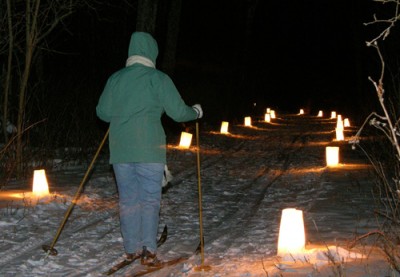
“You don’t go through Door County,” explains a local merchant, “you go to Door County.” A look at the Wisconsin map underscores his point. The 70-mile Door County Peninsula juts north until it runs out of land and disappears in the swirling water where Green Bay meets Lake Michigan. Early French explorers were so intimidated by the choppy passage between the peninsula’s tip and nearby Washington Island that they called it Port des Morts, or Door to Death. Later, settlers wisely dropped the “death” but held onto the Door.
A ferry service now links Door County with Washington Island, giving visitors one more option to consider when deciding where to go and what to see. The choices and the crowds diminish after the middle of October when fall foliage fades, traffic thins, and some venues close for the season. Getting a table at Al Johnson’s popular Swedish restaurant becomes easier, and the waitresses have time to explain why the goats are on the restaurant’s sod roof (to trim the grass, of course) and what’s so special about Swedish pancakes (they’re square and sprinkled with lingonberries).
Of the county’s 100 art galleries and museums, enough are open to prompt tourists to wander the string of villages, talk to the locals, and hear the quirky stories behind the towns’ names. There’s Carlsville, once spelled “Karlsville” and named for the large number of male residents (six!) with the first name of Karl. Then there’s Egg Harbor, whose name dates back to 1825 when a trade flotilla put down anchor and a food fight broke out among the landing party. This resulted in eggshells covering the pristine beach. The town of Ephraim—a biblical word meaning “fruitful,” appropriate since tart cherries grow by the bushels—was settled by Norwegian Moravians and still follows Moravian law that insists all buildings be painted white.

During “high season,” at least 10 restaurants in the various villages host outdoor fish boils. By November that number shrinks, but the tradition continues on Friday nights at the century-old White Gull Inn. The cooler weather and early sunset (around 4 p.m. in December) add to the fun because dinner guests huddle outside to form a ring around a huge steaming cauldron. The pot, filled with chunks of fresh whitefish and small red potatoes, is brought to a boil over an open fire. When the fish oils rise to the surface, the Master Boiler tosses a small amount of kerosene under the pot. The burst of flames causes the oils to spill over the sides and leaves the fish perfectly cooked and ready to serve.
Reservations for the fish boil are required in the summer months but off-season guests are likely to claim a spot around the cauldron without advance notice. The same holds true for securing rooms at one of the dozens of inns that stay open after October. Some accommodations are especially welcoming during the six-month stretch that innkeepers call “the quiet season.” At the Blacksmith Inn on the Shore, each room has a postcard view of Lake Michigan, a fireplace, and is furnished with authentic antiques. “My wife scoured the country for the furniture,” says innkeeper Bryan Nelson, who bought the house and its next-door smithy 13 years ago as “a work in progress.”
At least half of the guests at the Blacksmith Inn are repeat visitors who often request their favorite rooms year after year. For newcomers who ask for suggestions on how best to spend their limited time, Bryan has a ready list of activities based on the season. He recommends that warm weather visitors consider a bike ride to the Cana Island lighthouse, a two-hour sail on the schooner Friendly, or an outdoor jazz concert. When the temperatures dip, there are candlelight ski treks, sleigh rides through the woods, and cooking classes at The Savory Spoon. However they customize their itineraries, guests usually voice the same complaint when they leave, according to Bryan. “I often hear people say, ‘We simply ran out of time.’ ”
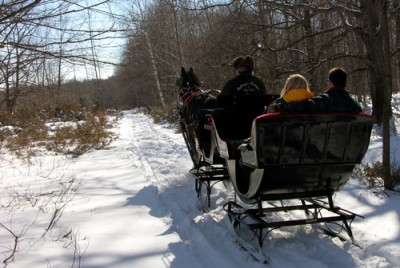
Get in line
Door County is football country, and the Green Bay Packers have been the “home team” for 90 years. The Packers open their season on September 13, but if you’re thinking about adding football to your vacation itinerary, get in line. Historic Lambeau Field, home of the Packers, has been sold out since 1960 and has 57,000 names on its ticket waiting list. The team is owned by fans who turn out in record numbers to cheer their 12-time national champions. Average wait for season tickets: 30 years.
Take a number
Did you know that Door County has:
- 300 miles of shoreline
- 10 historic lighthouses
- 42 outlying islands
- 5 state parks
- 2,000 acres of cherry orchards
Cherries for all seasons
Door County orchards typically produce 13 million pounds of tart cherries a year, which means visitors can stock up on cherry wine, salsa, BBQ sauce, jams, butter, juice … and the list goes on and on. Most restaurants and inns keep a ready supply of dried cherries on hand so they can offer their “specialties of the house” year-round.
The recipes for Cherry Almond Scones and Cherry Oatmeal Cookies are from the Blacksmith Inn on the Shore.
All images courtesy of Door County Visitor Bureau, doorcounty.com
